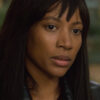Bonni Cohen and Jon Shenk faced a dilemma. There were many during the making of “Audrie and Daisy,” which required a sensitive touch. In delving into the inexplicable sexual assault of two teenage girls in separate parts of the country, the partners in life and film faced the considerable challenge of conveying not only the horror of such an event in a tactful way, but in the age of social media, show the second assault that takes place online as an new generation thinks nothing of spreading gossip and worse – evidence from the crime – over Facebook and SnapChat. Throughout the film, Cohen and Shenk use animation and other means to simultaneously get the precise emotion of the experience while obscuring it to protect those involved, but for one of “Audrie and Daisy”’s most powerful scenes, in which Charlie, the brother of Daisy Coleman, who was 14 when she was raped by someone he thought was a friend of his, describes learning there might’ve been a video of the assault floating around, extra care had to be taken.
“There’s a way for you to get at that emotion of his without really pushing it over the edge,” Cohen said, ultimately deciding to juxtapose his account of discovering there was a video with footage of him power lifting in a weight room as his private thoughts would seem to appear as the motivational slogans that are written on the walls.
It’s a shrewd and necessary bit of a filmmaking in a film full of such moments, considerate of both those who perpetrated the acts and those who continue to suffer from them until this day. While Coleman lives to tell about the night she snuck out of her mother’s house to what she thought would be a night of innocent drinking with boys she knew in Maryville, Missouri, the film also chronicles a similar story in the heart of Silicon Valley in Saratoga, California where the 15-year-old Audrie Potts got a little too inebriated at a party and was sexually assaulted by three boys, the shame of which — perpetuated in Facebook posts — led her to take her own life. The stories are devastating, but unfortunately not uncommon as we come to learn, not even necessarily through the facts the film presents with the occasional title card, but the general attitudes of those Cohen and Shenk interview. Although an entire cultural shift would seem to be impossible to capture, the filmmakers do identify the seeds of what’s come to be known as “rape culture” through Coleman and Potts’ stories and how a network of strong young women is forming to combat it.
Shortly before “Audrie and Daisy” premiered at Sundance, Cohen and Shenk spoke about how they first became interested in the subject, how the film unwittingly became a part of Potts’ legal case, and taking on the challenge of visualizing the unimaginable.

Jon Shenk: Bonni and I are married and partners in our filmmaking life as well, and we have a 13-year-old girl, and a 15-year-old son, so as you can imagine, we’ve been dealing with an unknown world in the sense that we didn’t grow up with mobile phones and the internet – it’s the one aspect of parenting that is just trial and error for us.
Bonni Cohen: [laughs] We’ll call trial and error, but this is wandering aimlessly through the desert. I don’t think parents really know how to deal with the use of social media.
Jon Shenk: So we got interested in this age-old problem of sexual assault as it intersects with one of the newer things in the world, which is the internet and social media. One thing led to another and we started investigating what happens in communities where these type of stories take place – girls going to parties, drinking too much, passing out, and then getting assaulted by people they thought were their friends. Then of course it doesn’t end there, and in some ways, the story just begins because often times pictures or video are taken, and you end up with this social media bullying that happens with the tool of the internet.
Bonni Cohen: The more parents we spoke to and the more stories that cropped up, the more interested we became in trying to find some stories to tell that would really get into what are the boys thinking? Do you think they even know that this is criminal behavior? And when was it that [as a society] we crossed over line, or maybe nobody ever taught it to them. That terrain became really interesting to us as well because these kinds of stories are never told from the perspective of the boys.
Did you pick these two cases because they took place in different parts of the country?
Bonni Cohen: The two cases happened the same year within eight months of each other and the girls were the same age. That was important for us. Also important, as you point out, was the two different locations being so different one from the other. This can happen in the heart of Silicon Valley, it happens in rural Missouri, so there was this diptych quality of the girls existing together in this film, going through something similar – one surviving, one not. The similarities in their ages and experiences really played into that. We found it very powerful to watch how these two girls’ stories had echoes of each other in their stories, and how we have these two girls speak more broadly for the larger problem that all the other girls this happens to.
Did you actually spend more time with Daisy than with those involved in Audrie’s case? I only ask because you see how people’s hair changes.
Bonni Cohen: [laughs] You don’t need to spend that much time with Daisy for her hair to change, because it can change weekly. The truth is that we spent about a year on and off with her and her look definitely changed, but more than anything, she changed. We spent about a year with her and really knew her first coming right out of the case closing, and she was a shell of herself. We watched her gain trust in us, and regain trust in the world, and start to become human again.
We probably spent an equal amount of time with both of them. We spent time filming in Sacramento with Audrie’s family when they worked with California [State] Senator Jim Beall on what they called Audrie’s Law, which would [mean] harsher sentencing for these crimes, especially juveniles when there’s social media involved. That aspect of it is not in the film and that angle will be used more in the outreach. We also really wanted these stories to be told from the perspective of the teenagers experiencing it in their lives, and unfortunately in Audrie’s case, she wasn’t there to tell her story.

Jon Shenk: Yeah, we really felt like a guiding principle for us throughout this whole process was to really try to keep the story intimate and small, approaching it as we would any character-based story. We wanted to have the magnifying glass be on something really small, and hopefully people watch the film and have the issues echo. Maybe you’re somebody who’s had violence in your life, but maybe you’re not. With really intimate and emotional coming-of-age storytelling, we thought we could build a family drama [where] obviously there’s been tragedy, but we’re hoping that it can speak beyond that to really help people recognize patterns in their own lives and have discussions that may or may not take place in their own families with their own children.
Was it a difficult interview process? Your subjects are remarkably calm talking about such horrific acts, but it couldn’t have been easy to get there.
Bonni Cohen: It was really a range. In the case of Daisy, through spending time with her, she softened, but that was a relationship we really needed to nurture. There was everything from that to all the sudden finding out that we had 45 minutes to interview the boys who perpetrated Audrie Pott’s crime. There were different difficulties in each of the interview, and no one wants to rehash these incidents. In Daisy’s case, we definitely didn’t want to re-traumatize her, so we went very, very slowly and with the boys too, they had been through a lot themselves, so we got a lot of advice about how to work with them and took it from there.
Since how you get the interview with the perpetrators in Audrie’s case is explained at the end of the film, I don’t want to say too much here, but it is incredibly unusual since it basically places you in the position of being a legal emissary to Audrie’s parents. Was that as uncomfortable as it sounds as objective filmmakers? [Mild spoilers ahead]
Bonni Cohen: I don’t think it’s ever happened before.
Jon Shenk: We’re pretty sure that a unique opportunity/moment in documentary filmmaking that we were presented with. It was very odd. Obviously, we knew the Potts quite well. We’d been following them for the better part of a year throughout their grieving process and in their political campaign to try to change some laws in California. We had been in close touch with them, and we knew that there was a civil trial going on of course, but it gave us pause [when we were contacted to do an interview]. We didn’t know if we wanted necessarily participate in what the boys really saw as their punishment to have to talk about this night, but we ultimately thought that if we could do it in an honest way that was respectful and revealed to the audience what was going on as well, that we could get something out of it.
We jumped through some serious hurdles to do it. We had to keep them anonymous yet we really wanted to maintain their humanity in the motion of their body language and facial expressions. We ended up embarking on this crazy animation process where we isolated their facial features, distorted them, and then put them back together again, which gives you a little bit of a haunting look on screen, but retained their person-ness.
Throughout the film, you found a tasteful way to show what was going on. Was that a constant challenge throughout to visualize the otherwise unimaginable?
Bonni Cohen: Yeah, in Saratoga, there was a whole can of worms from a visual perspective because Audrie is no longer with us. Certainly with Daisy, she’s an artist and she uses art as an outlet, whether it’s through her drawing or tattooing. We had this idea that we could animate her drawings of the night of the assault — because how else do you depict such a thing? We didn’t want to pretend we knew what it looked like. We thought we would give her an opportunity to show what it looked like in her head.
Was portraying social media also tricky?
Jon Shenk: Yeah, the social media really presented us with an obvious problem because it’s communication that we didn’t film and there’s no media associated with it other than text and pictures, so we wanted to use that document-free evidence in a creative way to show that the social media is very much a character. Often on newsprint or on screen, it can look cold and distant, but we really wanted to make the viewer feel the emotional intensity of it, the same way somebody would if they were getting a Tweet or text, or Facebook message the way that these girls were.
Frankly, that goes back to what we were talking about earlier with our own children. We grew up in the ‘70s, and I can remember days being ruined by a note that might have been passed around school on paper. I think the same is true with a text or a Snapchat that our kids might get. It could be a misinterpretation of something, but nonetheless, it’s very emotionally powerful. We had really excellent help with our graphic design and animation team to figure out creative ways to bring all that to life.
You mentioned outreach earlier. It may be too early, but do you have plans for this film in those terms?
Jon Shenk: The short answer’s yes. We’re building a social action campaign that is going to revolve around educational outreach where high school and middle school kids [can] see this and a contact will allow them to have conversations and talk about issues that might otherwise be really difficult to talk about without an example in front of them. We’re going to create video modules and a curriculum for sex ed and health classes and really try to spread the film out in as wide a way possible.
We are very lucky to be working with Futures Without Violence, which is San Francisco-based organization run by the superhero Esta Soler, who’s a long time women’s rights advocate. Their organization does incredible programming for boys and girls to help model appropriate behavior and just learn what’s right and wrong in this landscape.
We’ve been just amazed at the really honest and interesting conversations that have taken place in our rough cut screenings. We’ve had parents and teenagers involved and it’s just been refreshing. Kids seem to love the film, I think, because it echoes right back to them a version of what they’re seeing in their lives.
“Audrie and Daisy” will premiere on Netflix on September 23rd.




